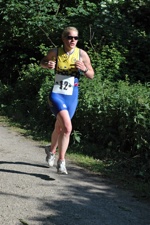 In last week’s anatomy session we started looking at the thorax. I spoke a little bit about the structure of the thoracic cage, specifically the ribs and the intercostal muscles.
In last week’s anatomy session we started looking at the thorax. I spoke a little bit about the structure of the thoracic cage, specifically the ribs and the intercostal muscles.
We noted that the diaphragm is responsible for increasing the volume within the thorax when its muscle fibres contract and the dome shape becomes flattened. That increase in volume causes a decrease in pressure, and air is drawn into the lungs. Similarly, the three layers of intercostal muscles (external, internal and innermost: relate these three layers to the three layers of muscle in the abdominal wall) are also able to increase or decrease the volume of the thorax. The external intercostal muscles pull the ribs superiorly, and because of their shape and their articulations with the thoracic vertebrae the ribs also move laterally, rather like the handle of a bucket. The chest becomes wider. The sternum is moved anteriorly and superiorly, and this is likened to the movements of a pump handle. The internal intercostal muscles pull the ribs inferiorly, reversing these movements. So the intercostal muscles and the ribs can add to the work done by the thorax to increase the rate at which air moves into and out from the thorax in vigorous ventilation.
Have a look at this Student BMJ article to read a little more about these movements.
We looked at the shapes of the ribs and the attachments of the intercostal muscles, to better understand their actions.
Our next question regarded how we might link these musculoskeletal movements with the lungs themselves. Looking at the visceral and parietal pleura we looked at their associations (the visceral pleura tightly lines the surface of the lungs and the parietal pleura lines the internal surface of the thoracic cage, the mediastinum and the diaphragm) and the pleural cavity in between these two layers. The pleural cavity contains a small amount of fluid, allowing the visceral and parietal pleurae to slide easily over one another and, most importantly, it causes the two layers to stick together. I used the analogy of two wet plastic carrier bags. The surface tension of the fluid causes the two surfaces to stick to one another yet also allows for free, sliding movement as the lungs expand and contract.
We talked a little about how this anatomy is linked to the condition known as pneumothorax.
We then talked about why sprinters bend over and brace themselves by holding onto their knees or thighs after an intense anaerobic effort like the 100m sprint. The athlete has built up a large oxygen debt that he or she is trying to repay, and is breathing deeply and rapidly. So why the braced position? This position fixes the shoulder joint and upper limb and from last term’s work we’re aware of a number of muscles linking the rib cage to the upper limb and shoulder. For example, serratus anterior passes from the scapula to the upper ribs. Normally it would contract to protract the scapula around the rib cage, but when the scapula is fixed in position contraction will instead pull the rib cage superiorly, aiding the external intercostal muscles. This large muscle (and others: have a think about it) will help force air into the thorax. You may find that people suffering from a narrowed airway, such as asthmatics, may similarly brace themselves against a table to similar effect.